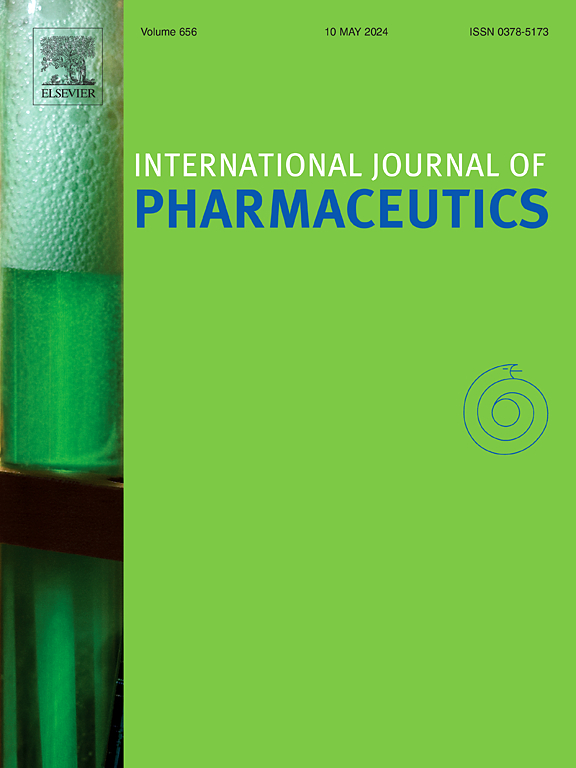Microbubble-encapsulation of actives for controlled release and its application to the taste-masking of acetaminophen
IF 5.3
2区 医学
Q1 PHARMACOLOGY & PHARMACY
引用次数: 0
Abstract
In this work we present a new encapsulation method that allows for the controlled release of drugs under simulated small intestinal conditions. This method consists of encapsulation within microbubbles and is characterized by an unprecedented combination of excellent barrier properties and fast and complete triggered release. The method was applied to produce a drink containing taste-masked acetaminophen as a model drug. Micronized acetaminophen (paracetamol) was dispersed in cyclohexane containing pharma-approved hydrophobized silica particles and the resulting dispersion was emulsified in an aqueous phase containing dispersed hydrophobized silica particles and dissolved maltodextrin. The resulting solid-in-oil-in-water emulsion was washed to remove unencapsulated acetaminophen and subsequently freeze-dried to remove both the water and the cyclohexane. This produced a dry material that after reconstitution in water created a suspension of microbubbles containing acetaminophen particles, i.e. a solid-in-gas-in-water dispersion. The encapsulation efficiency was well over 90% and hardly any acetaminophen escaped from the microbubbles during storage for 24 h in aqueous solution. Also, encapsulates were stable in the presence of saliva as well as during in vitro incubation with stomach juice. In line with this, sensory tests showed an excellent masking of the taste of the drug. In vitro incubation with simulated intestinal fluid containing bile salts triggered fast and near complete release of the encapsulated acetaminophen, which should assure good bioavailability in vivo. The described encapsulates that are stable for at least days, are thus expected to be suitable for taste-masking or enteric release applications in liquid formulations, including foods.

求助全文
约1分钟内获得全文
求助全文
来源期刊
CiteScore
10.70
自引率
8.60%
发文量
951
审稿时长
72 days
期刊介绍:
The International Journal of Pharmaceutics is the third most cited journal in the "Pharmacy & Pharmacology" category out of 366 journals, being the true home for pharmaceutical scientists concerned with the physical, chemical and biological properties of devices and delivery systems for drugs, vaccines and biologicals, including their design, manufacture and evaluation. This includes evaluation of the properties of drugs, excipients such as surfactants and polymers and novel materials. The journal has special sections on pharmaceutical nanotechnology and personalized medicines, and publishes research papers, reviews, commentaries and letters to the editor as well as special issues.

 求助内容:
求助内容: 应助结果提醒方式:
应助结果提醒方式:


